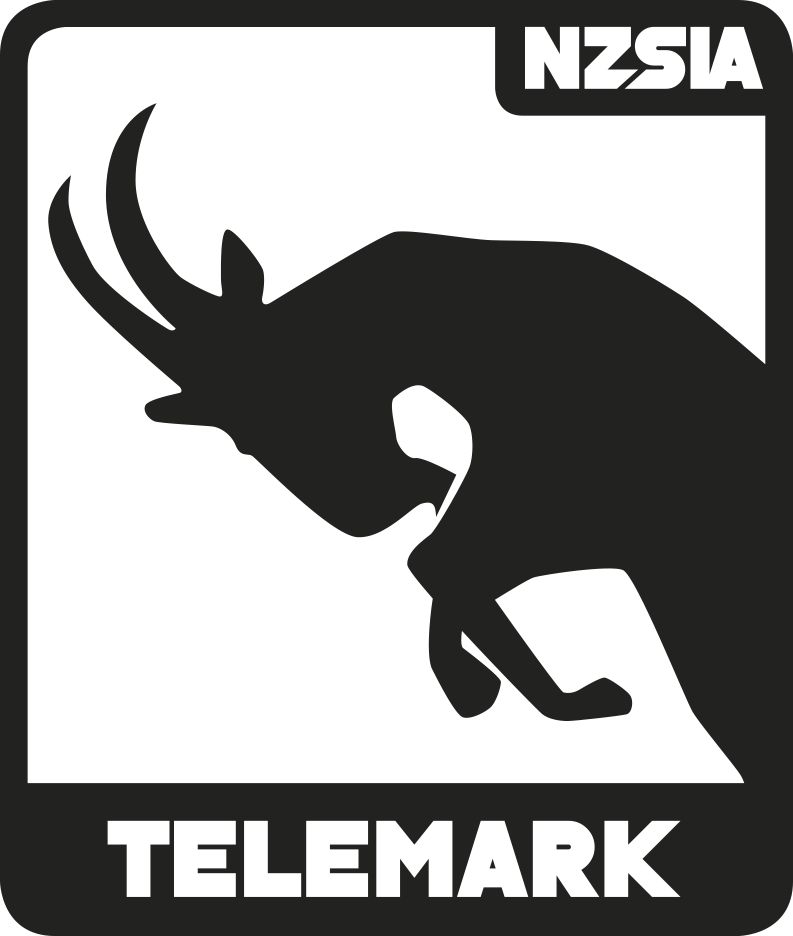Here we talk about how gravity, friction, and snow reaction forces influence a telemark skier’s movement and balance. This section highlights how these external forces interact with the skier’s mass, centre of gravity, and base of support, particularly within the unique demands of the telemark stance. It explains the principles behind managing pressure, understanding centripetal and resultant forces, and maintaining balance while turning. The chapter also introduces platform and steering angles, which help determine grip and turn shape.
![]()
External Forces
The term force describes something that causes a skier to undergo a change in speed or direction. It is simply anything that pushes or pulls on an object. This chapter discusses the interaction between the combination of telemark skier and skis and the snow surface.
Two categories of forces are experienced when skiing:
Internal forces are generated by the skier through muscular-skeletal movements. These types of forces are covered in The Four Movements.
External forces include gravity, friction, and the reaction forces from the snow. These are forces that act upon a skier. A telemark skier must manage these forces through proactive and reactive movements to stay in balance, particularly given the split stance inherent to telemark skiing.
Managing the Forces
A telemark skier and their equipment (boots, bindings, clothing, etc.) represent the skier’s mass. This term is defined as a measurement of the quantity of matter an object possesses. This is slightly different from the term weight, which is a measurement of gravity’s effect on the object. An object with greater mass will have a larger weight because gravity is a constant.
The skier’s centre of gravity is defined as the mean location of the weight of a body. For our purposes, it is the theoretical point in the body where all mass acts as if it is concentrated. As a telemark skier moves, this point may be inside of or outside of the body (see image). Where this point is located determines where the skier is balanced on the skis.

When describing the location of the skier’s centre of gravity, we reference its relationship to the base of support, which is defined as the portion of the ski or skis under the foot or feet. A telemark skier standing still on flat ground is in balance when their centre of gravity is over their base of support from both a lateral and fore/aft perspective.
Unlike alpine skiers, telemark skiers have a split base of support, with one foot positioned forward and the other behind in the telemark stance. This means balance and pressure management are dynamic throughout the turn. A telemark skier standing still with their centre of gravity balanced over the middle of their base of support will feel pressure against the soles of both feet, distributed between the front and rear ski.
Pressure is represented by the equation P=F/A where P = pressure, F = force, and A = area (units are N/m²). It is important to understand that if the contact area is reduced or the force is increased, the pressure increases. For example, when a telemark skier moves into a deeper lunge, the surface area of the rear ski engagement may reduce, increasing pressure on the front ski. This is why telemark skiers must actively manage weight distribution between the lead and trailing ski to maintain control.

Friction
The force that resists the motion of sliding on or through a surface is defined as friction. Simply put, it is friction that slows a skier down.
A telemark skier experiences two types of friction:
- Friction from the surface of the snow
- Friction from the air – also called wind resistance

The direction of friction is generally opposite to the skier’s momentum. In a straight run, the force of friction is parallel to the skis; in a hockey stop, it is perpendicular to the skis (see image).
When telemark skiers wax their skis, they attempt to lower the amount of friction acting upon the skis to allow them to travel faster. A telemark skier in a race or high-speed environment may use tighter clothing to lessen the slowing effect of wind resistance, while a skier in deep powder may embrace drag to maintain control.

